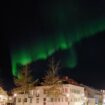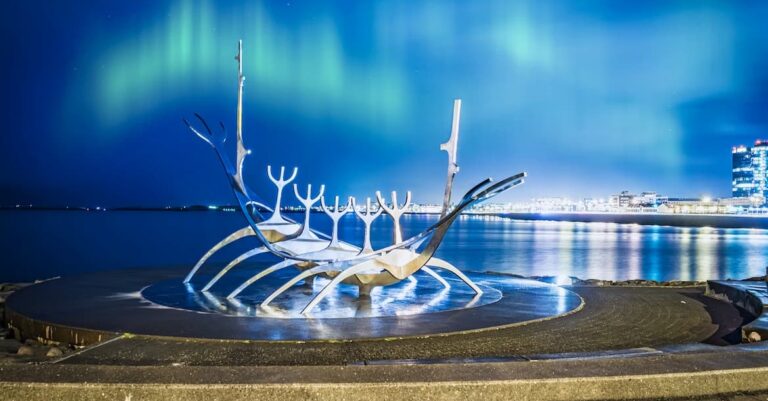
We are reader-supported and may earn a commission on purchases made through links in this article.
It’s 10.30pm on my third night in Reykjavik when I get the text.
A girl I met briefly in another hostel sends me an urgent Whatsapp message: ‘come outside now! I’m at the church, they’re everywhere.’
A stream of photos appear in the chat, all of the iconic Hallgrimskrikja church haloed with vivid green. I’m giddy with excitement, shoving the photos into the faces of my sleepy hostel dorm-mates. I’ve only known them for a few hours.
Planning a last-minute trip to Iceland?
Top Experiences and Tours in Iceland:
- See the sights with a tour of Golden Circle, Blue Lagoon Including Admission & Kerid Volcanic Crater
- See glaciers on the Golden Circle & Glacier Snowmobiling Day Trip from Reykjavik
- Explore more with this tour of Northern Lights Yacht Cruise
Where to stay in Iceland:
- Find accommodation with Booking.com
- Find your dream apartment in Iceland with Agoda
- Find a hostel in Iceland with Hostelworld
We come from all over the world with wildly different backgrounds: Germany, Poland, New Zealand, America. But the aurora is something that transcends national and cultural boundaries.
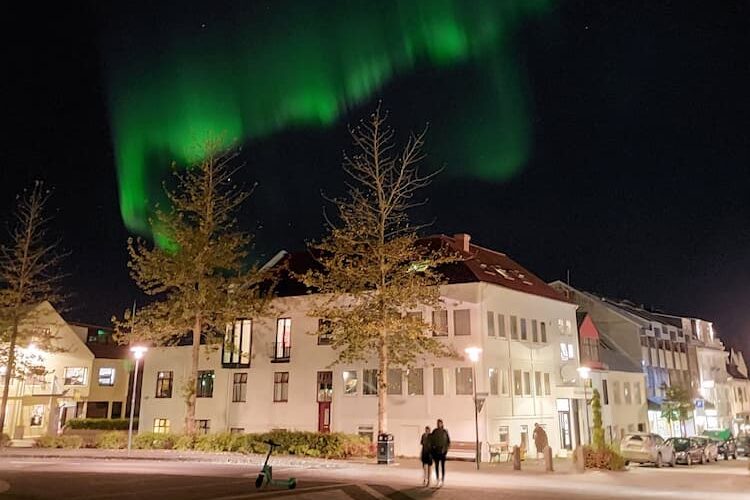
As soon as they see the photos, a current of excitement electrifies the room and all thoughts of sleep are forgotten. We slide into our winter coats at lightning speed.
Outside, a cold chill penetrates through my many layers and turns my nose pink. Though it’s only mid September the nights are already drawing in, lengthening like shadows at dusk.
Each day the sun sets five minutes earlier, dipping into a syrupy red horizon. We’re lucky tonight to have a cloudless, starlit sky.
Auroras in Reykjavik
It seems like half of Reykjavik has heard the news. There’s a jubilant, celebratory atmosphere in the air by the time we reach the iconic church. Tourists fill up the square, kitted out with hats and cameras, all staring up at the sky and talking excitedly as if they’re waiting for a show to start.
The church stands tall and imposing behind us, a silent witness to the city’s stories. Its curved spire scores a jagged wound in the night sky, while the columnar wings fan out around it in perfect symmetry like a spectacular organ.
Just in front of the church is a statue of Leif Erikson, the famous Viking who is said to have discovered North America. He stands triumphantly at the helm of his ship, sword and axe in hand, billowing cape forever frozen in an invisible breeze.
On the back of the statue is inscribed: ‘Leifr Eiricsson, son of Iceland, discovered of Vinland. The United Sates of America to the people of Iceland on the one thousandth anniversary of the Althing. AD 1930.’
I wonder how many times Leif has seen the aurora, both in life and in cold metal immortality.
Suddenly a gasp rises from the crowd. I look up to see a streak of whitish light pulse across the sky. It’s faint, and for a moment I’m not sure what I’m looking at. Is it the aurora? Or just a cloud?
But then it intensifies into a teal green, and my skin breaks into goosebumps. The ghostly light flickers above the lit up buildings opposite the square, shimmering like the scales of a dragon as it dances across the inky black sky.
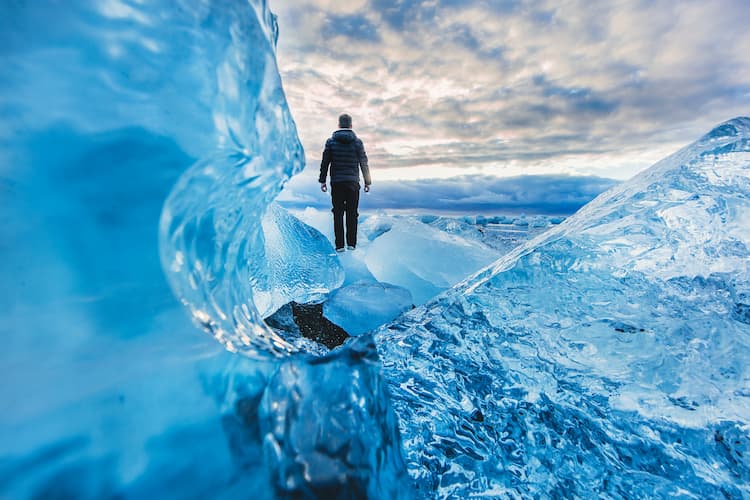
I’m entranced, unable to tear my eyes away. I don’t know how long I stand there watching them, but I stop feeling the cold leeching into my bones. For minutes at a time they’re in constant motion, flaring a violent emerald, dimming again to translucent wisps.
Like strange, prehistoric reptiles they coil in on themselves, then fan out in tentacle-like formations.
The Beauty of the Northern Lights
The aurora is ever-changing, continuously remaking itself in an ongoing state of creation and destruction. Electro-charged particles reassemble into new formations like swarms of migrating starlings.
It’s as if they have a hive mind, every particle with a pre-destined route to follow, the pattern of this dance imprinted into their very core. It reminds me of Iceland, a restless land which is always changing due to shifting tectonic plates.
It reminds me of people, and how we live in constant flux, our identities shifting through circumstance and experience.
Though I’ve seen countless planetarium shows of the northern lights, seeing them in real life is a surreal experience. They’re beautiful, but also unnerving, like the brain knows this is a rare phenomena that few humans will get to experience in their lifetime.
For 28 years I’ve stared up at a night sky that is static and dead, aware that the stars I’m seeing are likely already extinct. A snapshot history of the universe millions of years in the past.
But the aurora defies this. The aurora is alive with light and movement, most likely sound too if there was any atmosphere in space for sound to travel through. I imagine if I could hear it, it would crackle and pop like fizzing sparks.
For centuries, people have been fascinated, terrified of and inspired by these celestial lights. There are records of them in Viking sagas, Sami culture, and even ancient Chinese texts. Poets and artists have depicted them in art.
Kings have speculated that they are bad omens for war and plague. Others have said they are the souls of the dead.
What Are the Northern Lights?
Swedish fisherman believed the lights to be the reflection of large shoals of herring. The Finns believed they were created by the spume of water ejected from whales. In Norse Viking mythology, the lights are a bridge that lead those fallen in battle to the gates of Valhalla.
In scientific terms, the northern lights are the only way most people (who aren’t astronauts) will ever experience space weather on Earth. They’re essentially the result of solar flares being ejected from our sun and sending out strong beams of radiation that collide with Earth’s magnetic field.
The electro-charged particles in the earth’s atmosphere create the intense light show that we know as the aurora.
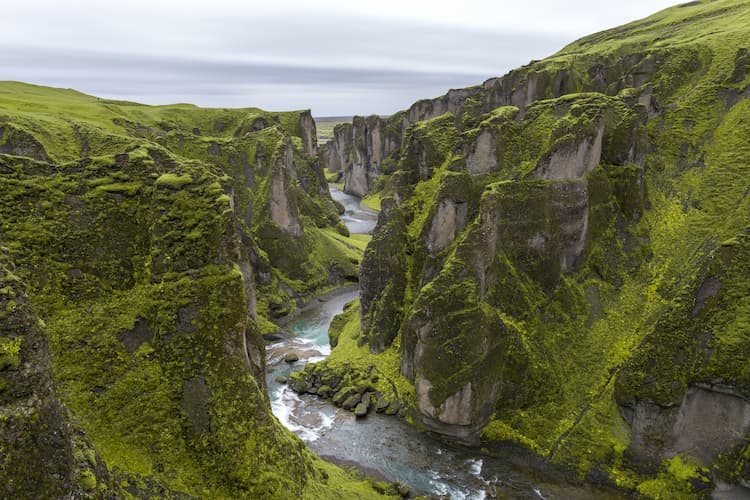
Being a writer rather than a scientist, I think there’s something quite poetic about the idea that the lights are physical evidence of the Earth’s invisible shield, protecting us from dangerous radiation that we aren’t even aware of.
As I watch them flicker into the sky like strange, alien morse code, I think of the many generations of humans before me who stood under this same Arctic sky and created their own story to explain the natural phenomena they were witnessing.
Maybe the science and the mythology don’t have to be so distinct from each other. They’re all just theories to explain these forces that are beyond our comprehension.
I imagine the Vikings must have felt relief and awe when they looked up at the sky and saw a bridge leading to an immortal kingdom. The Swedish fishermen were delighted knowing that their herring catch for the night would be good.
And those who believed the aurora were the souls of the dead must have felt comforted knowing their loved ones were flying high.
I think our compulsion to create stories to make sense of the world around us is a beautiful gift, turning things like electro-charged particles into great, dramatic sagas.
And here we are. Thousands of years later, still spinning tales. Still looking up at the night sky and hoping to catch a glimpse of the aurora, still and silent with all the reverence of a prayer.
If you go:
The Aurora are best seen between September – April
https://www.visiticeland.com/article/northern-lights-in-iceland
Inspire your next adventure with our articles below:
Author bio: Annmarie McQueen is a digital nomad and freelance writer from the UK currently on a life-changing journey around the world. She loves hiking, snowy mountains, pine forests and staying indoors on rainy days with a mug of tea.

